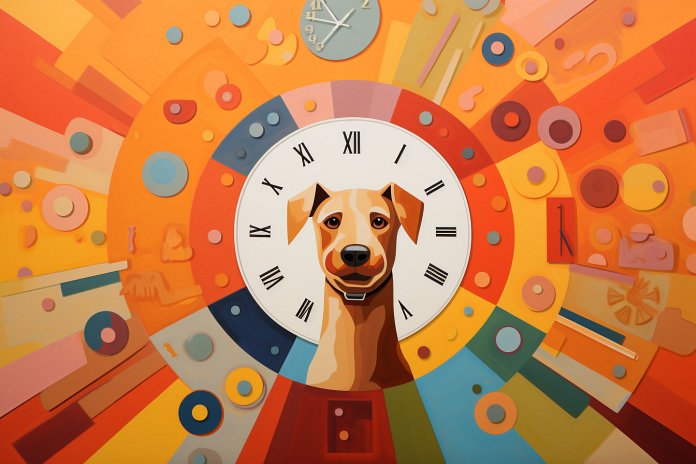
Dogs are creatures of routine, sticking to a strict schedule that determines when they wake up, eat, and go to bed. But how do they know what time it is? Without calendars or watches, dogs seem to have an uncanny ability to know exactly when to do certain activities. In this article, we will explore how dogs know what time it is.
Signs Your Dog Knows What Time it Is
If dogs could talk, they would likely demand things based on the time. However, dogs communicate with us through body language. It is up to us, as their owners, to interpret their behavior and understand their needs. A happy dog will have a confident posture, relaxed tail, smooth forehead, and an open mouth with a loose tongue. They may also invite you to play with a quick play bow. When it’s time to eat, dogs may beg with cute expressions, tilting their head and staring at you with big eyes. They may even whimper if you take too long to fulfill their request. Dogs also adapt their activity levels to your schedule, being energetic in the morning before you leave for work and in the evening when you come home. They may signal you to do something by nudging you, going to a specific location in the house, or walking back and forth. However, some dogs may experience separation anxiety, which can lead to escalating behaviors such as barking, howling, or chewing.
Body Language
When your dog thinks it’s time for something, watch for signs such as staring, head tilting, dropped ears, whimpering, tongue hanging, and play bowing. These are cues that your dog is signaling something to you.
The History of Dogs Telling Time
Humans have been measuring time for thousands of years, starting with tracking the movements of the sun and moon. The invention of sundials, oil lamps, hourglasses, and mechanical clocks all contributed to our concept of time. However, dogs do not have the same discrete measures of time as humans. They have internal clocks driven by their circadian rhythms. Animals, including dogs, learn time in short intervals through stimuli and social cues.
Teaching Your Dog to Wait
Learning to wait is an important skill for both dogs and humans. It gives dogs confidence and helps owners have better control over their pets. To teach your dog to wait, start with the “Sit” command and then introduce the “Wait” command using hand signals. Practice at the door, gradually increasing the difficulty by opening it and walking through while your dog stays seated. Then, move on to teaching “Wait” in a standing position.
Conclusion
Dogs have an innate sense of time, relying on their internal clocks and circadian rhythms. They communicate their needs through body language and adapt their behavior to your schedule. By understanding their signals and teaching them to wait, you can maintain regular routines and predictable behavior for both you and your dog.
“Dogs have internal clocks driven by their circadian rhythms, allowing them to sense time in short intervals.”

Tips & Things to Know
1️⃣ Dogs have an internal clock and can pick up on social cues to know what time it is. Pay attention to your dog’s body language and behavior to understand their routine and needs.
2️⃣ Dogs may show signs of excitement or anticipation when it’s time for something, such as staring, head tilting, whimpering, or play bowing. Responding to their signals can help maintain regular routines and predictable behavior.
3️⃣ Teaching your dog to wait is an important skill that can give them confidence and you better control. Start with the “Sit” command and gradually introduce the “Wait” command, using hand signals and positive reinforcement to reinforce the behavior.
Frequently Asked Questions, Answered ✅
1. How do dogs know what time it is?
– Dogs have internal clocks driven by their circadian rhythms and can pick up on social cues and scents to tell time.
2. What are some signs that my dog knows my routine?
– Your dog’s activity level may adapt to your schedule, they may beg for food or nudge and muzzle you, and they may go to locations in the home where activities usually occur.
3. Can dogs remember specific events that have occurred?
– No, dogs do not have episodic memory abilities and live in the moment.
4. Why is it important to teach my dog to wait?
– Teaching your dog to wait helps with impulse control, gives them confidence, and allows you to have better control over your pet.
5. How can I teach my dog to wait?
– Start with the “Sit” command, use a hand signal for “Wait”, and gradually increase the difficulty by practicing with the door and in different positions.